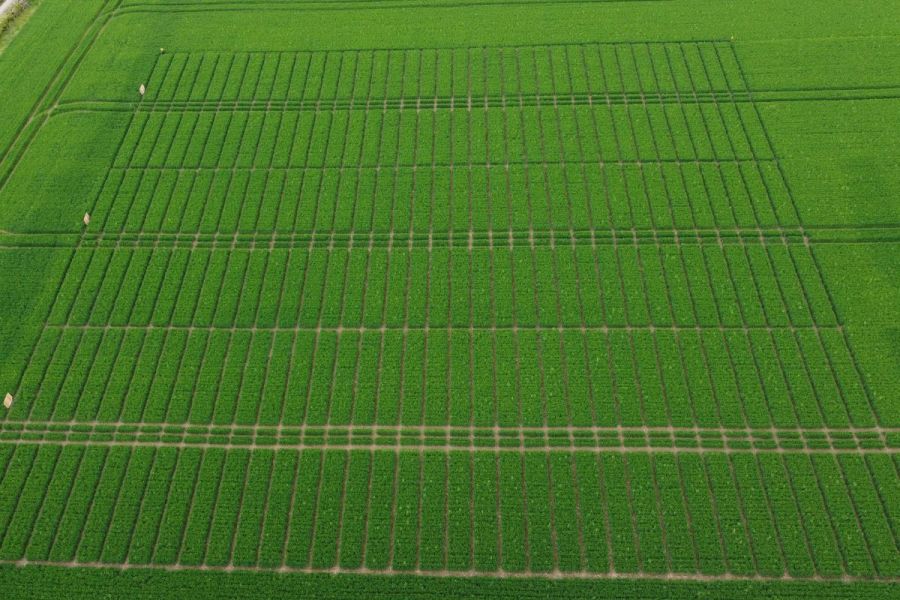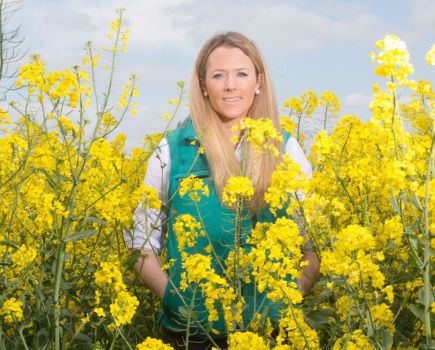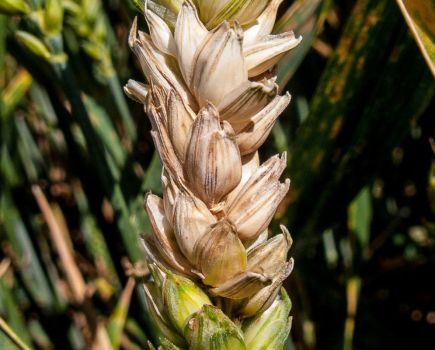An on-farm trial investigating a two-pronged approach to NUE has now concluded. CPM catches up with the team in Darlington to assess the results and understand if it’s possible to reduce reliance on traditional nitrogen.
“Where the true benefit lies is in carbon footprint gains.”
By Janine Adamson
CPM first spoke to William Maughan back in May (see June 2023 issue) when he was in the midst of hosting trials to investigate two elements of NUE in wheat – optimisation of what’s being applied through plant uptake and identifying alternative sources.
The farm, a 200ha mixed system in Darlington, was selected to host because with 30,000 free-range hens, 200 beef cattle and a cereal-based cropping rotation to contend with, optimising nutrition isn’t always the easiest task.
William cited ‘muck management’ as one of his priorities – making the most of what’s already available while applying principles similar to those of regenerative systems. He also said having increased his hen numbers, he was having to rethink how the farm balances the additional poultry manure with conventional nitrogen applications.
Casting back to last year, the trial protocol involved investigating how three ‘alternative N’ products respond within different nitrogen regimes, based on the farm standard of 180kgN/ha (100%) and two levels of reduced input. This was combined with a range of biostimulant technologies that aim to improve nitrogen assimilation.
The purpose was to understand how each product (SR3, Encera and Pro+ N-Viron 28) performs in isolation, as well as the potential of stacked benefits across the whole programme. For the varying nitrogen regimes, the first application was a consistent 60kgN/ha with subsequent doses reduced by 25% (30kgN/ha) or 50% (60kgN/ha).
Now, the results are in and ProCam says it’s a positive message for both William and other growers with similar objectives.
“To benchmark, William’s wheat yield from a full 180kgN/ha nitrogen regime without the products being trialled, was 11.35t/ha. When this was reduced by 30kgN/ha the yield dropped to 10.9t/ha, while reducing by 60kgN/ha resulted in 10.66t/ha,” explains ProCam’s Nigel Scott.
“An important take-home from this is that the farm is still achieving good yields despite a reduction in nitrogen, which is likely to be as a result of residual soil-based nitrogen from applied livestock wastes.”
Nigel says this supports William’s initial concerns regarding balancing poultry manures with synthetic applications, while compounding the importance of quantifying what’s already available in the soil. The next step is to understand the impact of the two biological fertilisers – SR3 and Encera, which are essentially derived by ‘bugs’, he adds.
“At full rate nitrogen, the results show that there hasn’t been a yield benefit from either of these products, suggesting nitrogen isn’t a limiting factor in this scenario. William would have to look at other ways to build yield further, such as plant health products, when applying full rate nitrogen.
“However, if we look at bridging the gap when reducing nitrogen by 30kgN/ha, adding either SR3 or Encera into the programme gives almost exactly the same yield as the full rate of nitrogen alone, which is a powerful message.
“Then, when reducing by 60kgN/ha but adding either SR3 or Encera, the yield is in fact better than the 150kgN/ha (30kgN/ha reduction) dose alone. So in essence, this shows us that you’re getting more than 30kgN/ha from either of these products,” explains Nigel.
But in William’s scenario, ProCam has deduced that the best outcome given what’s been learnt about the nitrogen dose response, is to reduce by 30-40kgN/ha and supplement with one of the biological fertilisers.
“Nitrogen prices have reduced considerably now, but that’s not to say they won’t rise again in the future. Where the true benefit lies is in carbon footprint gains – this is something the farm was keen to do given potential supply chain pressures,” says Nigel. “It also provides diversity of nitrogen sources, which provides a level of insurance and de-risking.”
William believes this seems solid advice. “Given the yield plateau on farm, my objective is to find alternative sources while maintaining crop performance. Having the trial data from my own farm to support future decisions is reassuring, and if this can be done while contributing to a more sustainable approach, it’s a no brainer,” he says.
Looking at the reason why these products have worked, ProCam’s Rob Adamson explains that it lies in the mode of action. “The bugs (rhizobacteria) in SR3 colonise the soil rather the plant, and one outcome of this beyond fixing atmospheric nitrogen, is making phosphorus, potassium and zinc more available – so enhancing other nutrients aside from nitrogen.
“Although providing a similar amount of nitrogen to the crop, Encera is a bacterial endophyte which colonises the plant cells, so a different mode of action, but the trial confirms we have confidence that both will deliver in terms of yield uplift in this specific scenario,” he says.
The third product trialled on William’s farm was Pro+ N-Viron 28 – foliar-applied efficient urea polymers. According to Rob, the manufacturer’s claim is that 20l of the product should provide the crop with around 40kgN/ha. “And the trial confirms that this is correct, whereas when applied alongside a full rate of nitrogen, it backed up that the crop was at its maximum N capacity.”
For the wheat treated with 150kgN/ha (30kgN/ha reduction) plus two applications of Pro+ N-Viron 28 at 1.0 l/ha (T1 and T2), the yield was 11.3t/ha – pretty much the same as the crop when a full rate of nitrogen was applied.
Nigel says again, William can reduce his conventional synthetic nitrogen dose but supplement with a more efficient foliar nitrogen and achieve the same result. “When faced with dry conditions, having the flexibility to apply a foliar spray is useful. But again, the carbon footprint credentials of Pro+ N-Viron 28 are much better than conventional fertiliser due to an improved manufacturing process,” he explains.
The final aspect of the trial considered the role of biostimulant products such as ProFusion Bio WDG and Twoxo Pro. All products provided a yield uplift across all doses of nitrogen, even at full rate, however it was the inclusion of Profusion in combination with 180kgN/ha that was most significant.
“ProFusion Bio’s mode of action relates to photosynthesis and the chlorophyll function in plants, rather than being associated with nitrogen utilisation. Whereas the aim of Twoxo Pro is to improve nitrogen assimilation with the 2-oxo metabolites in the product, hence why we’ve not seen the same level of improvement at full rate nitrogen as that’s our limit,” explains Rob.
Beyond yield, the trial has also indicated that using ProFusion Bio at both T1 and T2 timings can generate a 15% lift in GLA (green leaf area) as a result of facilitating chlorophyll production.
“The greening effect really stood out and there was a marked difference between the plots,” says William. “Given the farm grows wheat for feed, our aim is always maximising yield so ProFusion Bio would be of most interest to me.”
Conversely, the best product for improving grain protein was found to be Twoxo Pro, which Rob says is no surprise due to its mode of action being associated with nitrogen assimilation. “All in all, selecting the right product for the right scenario and desired outcome is crucial as we further our understanding of biostimulants and their different modes of action,” he concludes.
This article was taken from the latest issue of CPM. Read the article in full here.
For more articles like this, subscribe here.
Sign up for Crop Production Magazine’s FREE e-newsletter here.




